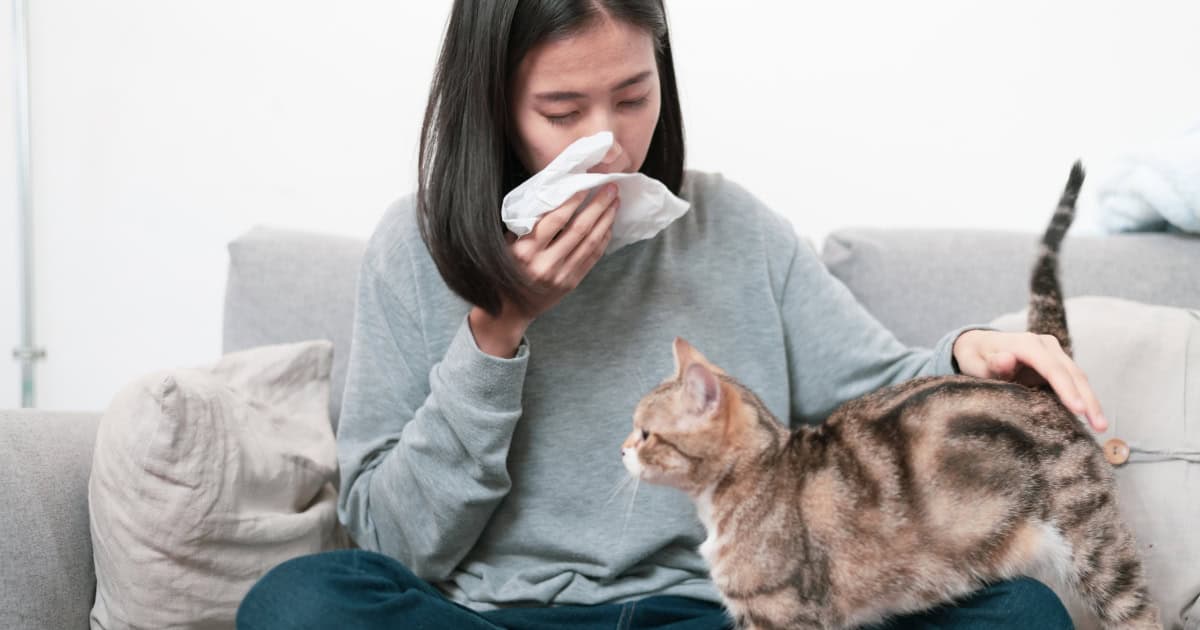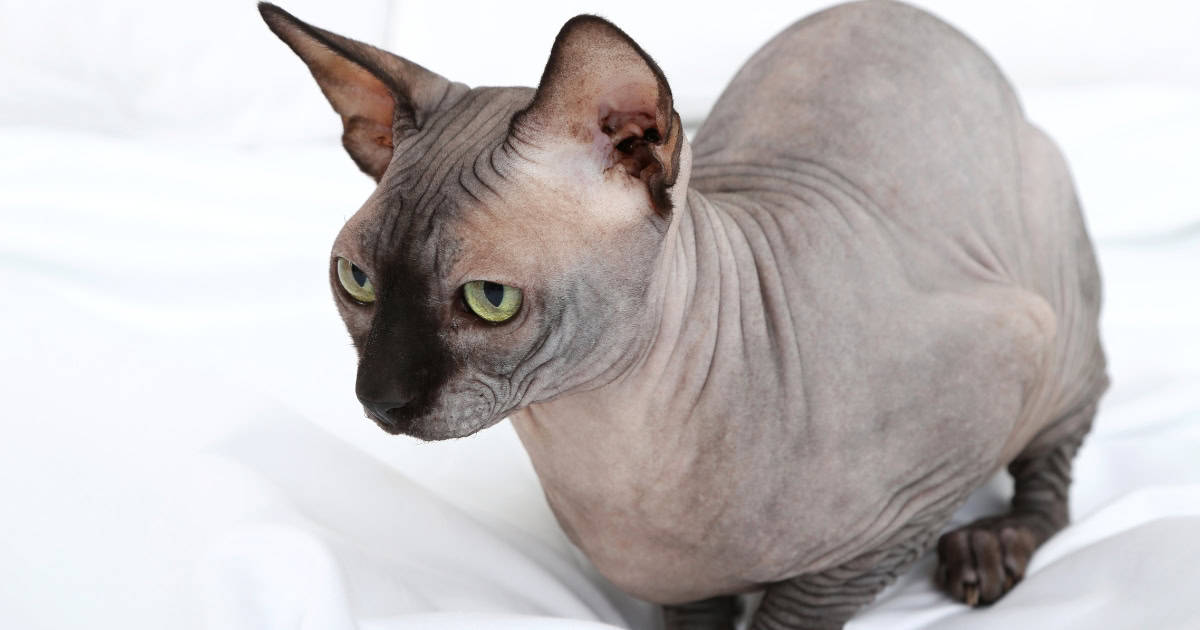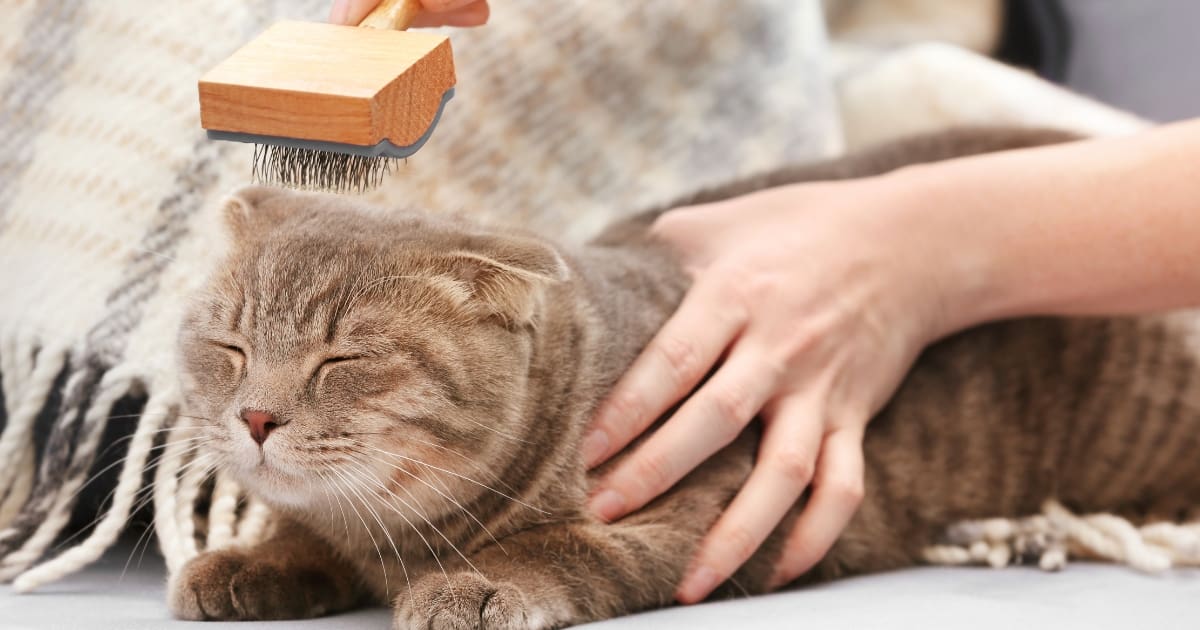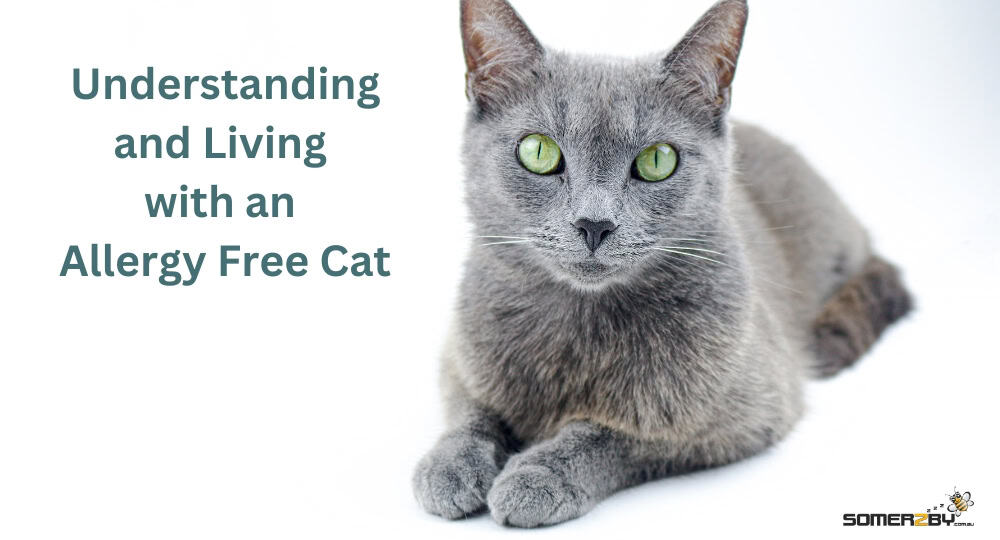Cats, Info Guides
Understanding and Living with an Allergy Free Cat
Hey there, cat lovers! In this blog, we’re diving deep into the world of cat allergies and exploring whether allergy free cats really do exist. We’ll discover how allergens affect the body, list some hypoallergenic breeds, and provide tips for minimising allergens in your home.
So, read on to uncover the truth about “allergy free cats” and make informed choices for a purr-fect companionship.
Understanding Cat Allergies
Cat allergies usually start with something known as Fel d 1, a protein predominantly found in a cat’s saliva and skin. Fel d 1 proteins cats produce are pretty harmless on their own.
The trouble begins when our immune system mistakes it for a threat and starts defending against it – that’s when allergy symptoms kick in.
The Science Behind Cat Allergies
Allergic reactions to cats aren’t caused by fur as most people believe but instead from exposure to proteins like Fel d 1 that cats and kittens produce.
This substance sticks to their fur during grooming and then gets released into the environment around us – on furniture, clothes, and even floating freely in the air.
The human immune system identifies these proteins as harmful invaders triggering histamine release leading to allergy symptoms.
Affect on Individuals
Sneezing, coughing or watery eyes are common signs of allergies. Different people react differently; while some may only have mild itching, others might experience severe respiratory distress due to cat allergens.
Understanding your reaction will help manage them better and potentially allow you to enjoy more cuddle time with your kitty.

Allergy Free Cats: Fact or Fiction?
Have you heard of hypoallergenic cats and wondered if they truly exist? Let’s unpack this fascinating topic.
The Myth and Reality
It is a widespread opinion that certain breeds of cats do not provoke allergic reactions. Is this true? The short answer is yes…and no. No breed of cat is completely allergen-free.
However, some “hypoallergenic” breeds do produce less Fel d 1 than regular cats. This means mild allergy sufferers may experience no symptoms and more severe allergy sufferers may experience reduced symptoms.
A Matter of Degrees
Fel d 1 allergen levels vary among different cat breeds. Hence some people with mild to moderate allergies can tolerate certain cats better than others. In reality ‘Hypo’ means less, not none. So-called hypoallergenic cats produce fewer Fel d 1 allergens compared to other felines.
Yet even low-allergen kitties can still cause reactions in some individuals. Before committing to a hypoallergenic breed, it is essential to spend time with the cat and assess your reaction.
This will help you gauge your body’s response before making a long-term commitment.
Hypoallergenic Cat Breeds
When it comes to choosing a feline friend, many people are faced with the challenge of allergies.
But don’t worry! There’s good news for cat lovers who sneeze and sniffle at the mere thought of fur – certain breeds may be easier on your allergies.
- Balinese cats: Single-layer coat, also known as the Longhaired Siamese breed.
- Bengal cats: Produces less Fel d 1, was created by crossbreeding the Asian leopard cat with the common cat.
- Cornish Rex cats: Shorter coat, minimal shedding.
- Devon Rex cats: Shorter coat, minimal shedding.
- Javanese cats: Produces less Fel d 1.
- Oriental Shorthair cats: Short fur coat.
- Russian Blue cats: Produces less Fel d 1 despite longer coat.
- Siberian cats: Produces less Fel d 1 despite being a long-haired breed.
- Sphynx cats: Hairless cat, still has some peach fuzz.
No “allergy free cat breed” is completely hypoallergenic as all cats produce allergens. The phrase ‘hypoallergenic’ suggests a decreased chance of cat saliva causing an allergic reaction.
It might help to spend time with a breed before bringing one home just so you know how your body reacts.
Genetics play a role in cat allergies and can influence how your immune system reacts to harmless substances like cat dander. While inheriting allergies is possible, it’s not guaranteed. Factors like environment and exposure history also contribute.

Care and Maintenance for Hypoallergenic Cats
If you’re living with allergies, hypoallergenic cats can be a great companion. But it’s essential to understand that care for these special felines is slightly different from other cat breeds.
Grooming Your Hypoallergenic Cat
Regular grooming plays a vital role in minimising allergens on your cat’s coat. It is a good idea for pet parents to brush their cat’s fur daily to keep fur tidy, remove loose fur and reduce dander.
To make this task easier, we recommend using a de-shedding pet brush. Bathing might seem like an effective way to keep allergens at bay; however, too much bathing can dry out their skin leading to more dander production.
So balance is key.
Diet and Hydration
The diet of your hypoallergenic cat matters as well because good nutrition leads to healthier skin and less shedding – both factors influencing allergy levels.
Providing them with high-quality cat food will help keep their coat healthy. Ensuring they are adequately hydrated aids digestion and helps keep their skin healthy thereby reducing shedding.
Allergy-Proof Sleeping Areas
To reduce exposure to allergens in your home, regularly wash cat bedding and brush hair away from areas they rest during the day. Also, vacuum any carpet or rugs daily. This will minimise the amount of accumulated cat hair or dander.
The Right Enclosure
Keeping your cat outdoors – whether for long periods or just for a few hours each day – will help minimise the amount of allergens in your home.
At Somerzby, we have a range of cat enclosures designed to allow your cat to live outdoors while staying safe and feeling mentally stimulated.

Lifestyle Adjustments for Living with Cats as an Allergy Sufferer
Living with cats while battling a cat allergy can be a challenge, but it’s not impossible. By taking certain measures and making alterations to your living space, you can create a setting that minimises allergens and allows for a more comfortable existence.
Create Allergen-Free Zones
The first step is to designate certain areas of your house as “allergen-free zones”, such as bedrooms or other frequently used spaces. These spaces should be off-limits to your feline friends.
Regular cleaning in these zones is crucial – vacuuming carpets, washing curtains and bedding often will help keep allergens at bay.
Cleaning Routines
Maintaining regular cleaning routines throughout the rest of the house is equally important. Frequent vacuuming using HEPA filters can catch cat dander that standard vacuuming might miss.
You may also consider investing in air purifiers, which work by filtering out particles from the air including dander.
Pet Grooming Practices
Grooming plays a significant role too. Brushing your cat regularly outdoors removes loose fur before it becomes airborne indoors.
Dietary Changes
Besides grooming practices, dietary changes may also help. Feeding your cat a balanced diet that promotes healthy skin can reduce dander production.
Omega-3 fatty acids, such as those found in fish oil supplements, are known to be beneficial for skin health and may help reduce dander production.
Outdoor Enclosures
Providing an outdoor enclosure allows cats to enjoy time outside and leave some of their allergens there. Here at Somerzby, we offer a wide range of cat enclosures designed with comfort and safety in mind.
Manage cat allergies medically with over-the-counter antihistamines, nasal irrigation with saline rinses, nasal sprays, and eye drops for mild symptoms. Consider allergy shots (immunotherapy) for severe cases, gradually building tolerance.
Toni’s Wrap
Understanding cat allergies is crucial for creating a harmonious living environment with our feline companions. Fel d 1, a protein in cat saliva and skin, triggers allergic reactions, impacting individuals differently.
Debunking the myth of completely allergy free cats, we explored hypoallergenic breeds with reduced Fel d 1 production. Cat owners can minimise allergic reactions through regular grooming, nutritional changes and daily cleaning of their homes.
Allowing your cat to live in a Somerzby outdoor enclosure will minimise the number of allergens in your home while also providing your cat with a safe area to enjoy the outdoors.
Visit our website here to view our full range of cat products.




